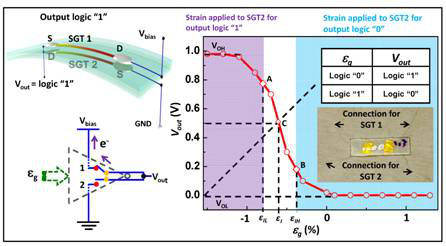Communications of the ACM
Push-Button Logic on the Nanoscale
Scientists at the Georgia Institute of Technology have used zinc oxide in the form of a nanowire to create smaller and simpler logic circuits. Zinc oxide was used as both the button and circuit for the first time. The material has piezoelectric and semiconductor properties. The piezoelectric effect occurs when a strain on a material reversibly changes the crystal structure in one direction enough to make an electric field.
 Using zinc oxide as both the button and the circuit, scientists at the Georgia Institute of Technology have created tiny logic circuits that couldbe used as the basis of nanometer-scale robotics and processors.Credit: Physorg.com Using zinc oxide as both the button and the circuit, scientists at the Georgia Institute of Technology have created tiny logic circuits that couldbe used as the basis of nanometer-scale robotics and processors.Credit: Physorg.com |
Wang's team plans to join the new strain-gated transducers to sensors and energy-drawing components to make "self-sustainable, all-nanowire-based, multifunctional, self-powered autonomous intelligent nanoscale systems."
From PhysOrg.com
View Full Article
Abstracts Copyright © 2010 Information Inc., Bethesda, Maryland, USA 
No entries found